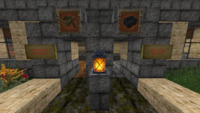Esperanto
Esperanto is a constructed international auxiliary language, created by L. L. Zamenhof in 1887.
Zamenhof grew up in Białystok in the Russian Empire. The city was ethnically diverse and its population divided by its various native tongues, so he wanted to unite people with a second language for everyone.
The inner idea of Esperanto is: upon the foundation of a neutral language, to cast down the walls among peoples, and to accustom humans to see in their neighbor only a person and a brother.
Esperanto is neutral because it doesn’t belong to a country or a people, contrary to English or French, for instance.
That’s why, in the 1920s, the language was proposed by the Iranian delegation to the League of Nations as the language of international relations. However, the proposal failed due to the veto of the French delegate Gabriel Hanotaux, who feared for the status of French as a global language.
The language is really easy and fast to learn. Zamenhof achieved this with a simple grammar without irregularities on the one hand and a low number of root words on the other. Every other word you can imagine can be formed using a building block principle. In the Unua libro of 1887, Zamenhof wrote: I established rules for the formation of new words, and at the same time, reduced to a very small compass the list of words absolutely necessary to be learned, without, however, depriving the language of the means of becoming a rich one. On the contrary, thanks to the possibility of forming from one root-word any number of compounds, expressive of every conceivable shade of idea, I made it the richest of the rich amongst modern tongues.
In art, the language is used (besides Esperanto culture) for neutrality and an alienation effect.
An example is Charlie Chaplin’s movie “The Great Dictator” which features shop signs in Esperanto.
Esperanto and Minevaria
In the world of Minevaria, Esperanto fulfills multiple purposes:
- Neutral lingua franca, e. g. at the harbor of Minechen
- Language of the ancient world, later of the well-educated (comparable to Latin)
- Sacred language of Thonism
- Some place names (squares, districts, …)
A few examples for Esperanto in Minevaria are:
- City of Chielo
- Minechen: Main street Ĉefstrato, city districts Haveno, Aliabordo and Leonsferoj
- Cordonshofen: Metro station signage, Placo de du domegoj
- Karolswiesen: Fontano de Karolo
- Subtera Fervojo




